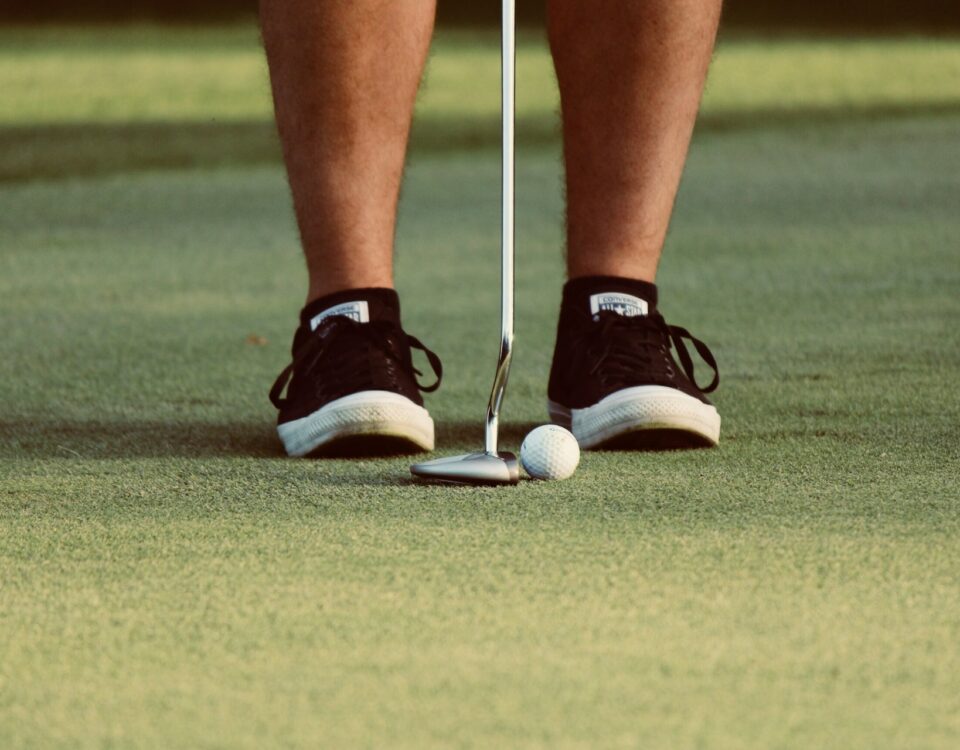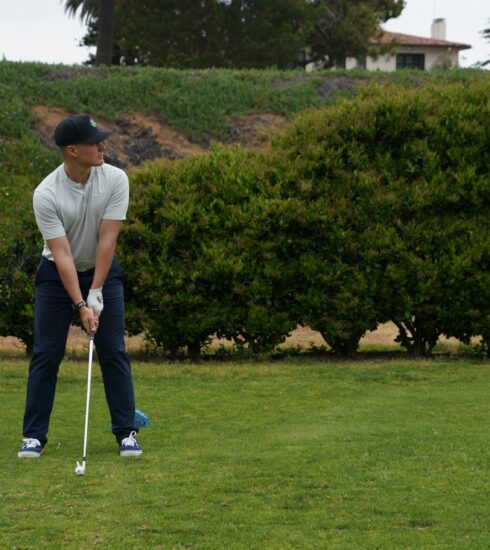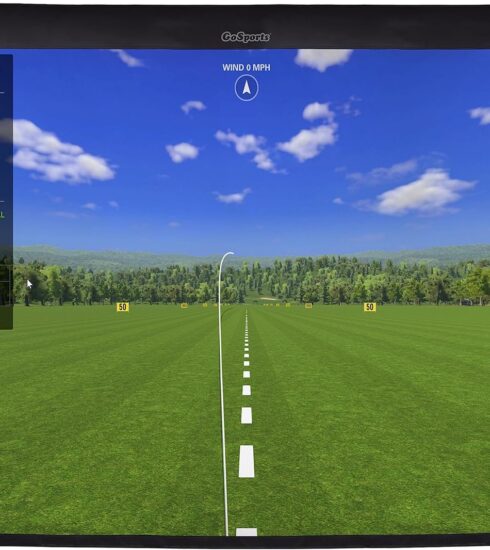The Ultimate Guide to Golf Etiquette for Beginners: Ways to Look Like a Pro
Key Takeaways
- Golf etiquette for beginners is just basic common courtesy.
- Always yell “Fore!” if your ball might hit someone.
- Keep noise levels down when others are hitting.
- Fix divots, rake bunkers, and respect the course.
- Keep up the pace—no one likes a slow golfer.
- Follow golf cart rules and stay in designated areas.
- Never step on someone’s putting line.
- Good sportsmanship goes a long way.
This post contains affiliate links. If you purchase through these links, I may earn a small commission at no additional cost to you. Your support helps keep this site running—thank you!
Golf has a weird way of making beginners feel like they’re walking into a secret club without a handbook. You’re out there, holding your clubs, trying to swing like Tiger Woods, but something feels… off. People glance your way when you talk. Someone sighs when you’re slow to hit. You’re walking across a player’s line of play—again.
Golf etiquette isn’t just about being polite. It’s what keeps the game enjoyable for everyone. If you don’t know the unwritten rules, you’ll stand out—and not in a good way. But here’s the best part: you don’t need fancy clubs or a single lesson to start looking like a pro. You just need to know the basics when it comes to golf etiquette for beginners, broken down into simple, free, easy-to-follow rules. Let’s get you playing like you belong.
1. Safety First—Because No One Wants a Golf Ball to the Face
When Do You Yell “Fore!”?
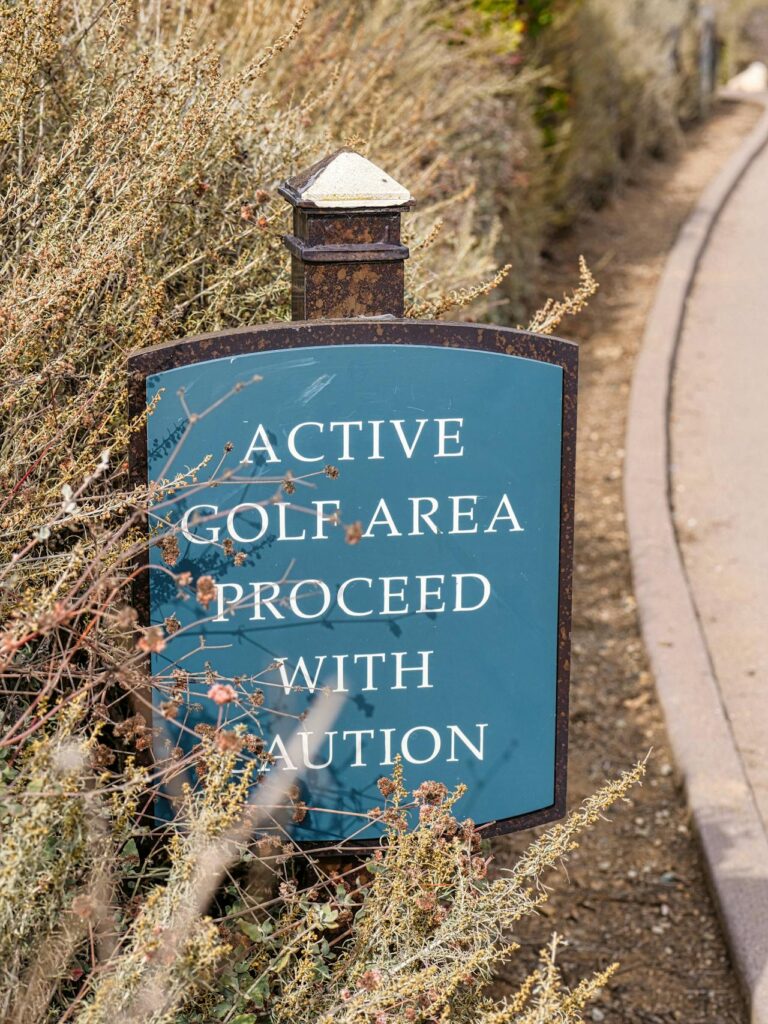
Picture this: You hit a shot. The ball starts curving—fast. It’s headed toward another group. Now what?
- Yell “Fore!” as loud as possible. Don’t whisper it.
- If you’re unsure whether your ball might hit someone, shout it anyway.
- Don’t wait to see what happens. The second your ball looks dangerous, warn people.
Watch Those Practice Swings
Ever had someone nearly whack you in the face while warming up? Don’t be that person.
- Always take practice swings away from others.
- Keep control—no wild, baseball-style windups.
- Look behind you before swinging. You’d be surprised how often beginners forget.
Stay Aware at All Times
Golf courses are huge. People are everywhere. And golf balls? They’re basically tiny missiles.
- Keep your eyes open for incoming shots, especially near fairways and greens.
- If you hear “Fore!”, don’t just stand there—cover your head and duck.
- Walk fast but stay alert. Some golfers hit before they should.
Want to avoid getting hit, hitting someone, or getting dirty looks all day? Follow these safety rules.
2. Respecting Fellow Golfers—Because No One Likes a Distracting Player

Ever had someone talk during a movie’s best scene? Now imagine lining up a golf shot, trying to focus, and someone nearby starts chatting about their lunch. Frustrating, right?
Golf is a quiet game. That doesn’t mean you have to act like you’re at a funeral, but if you want to blend in, respect the players around you.
Shhh… Silence When Others Are Hitting
- When someone’s about to swing, zip it.
- No whispering, no side conversations, no “helpful” tips.
- Stand still. Even tiny movements in someone’s peripheral vision can be distracting.
Help Find Lost Balls—It’s Just Good Karma
- If your playing partner’s ball disappears, help look for it.
- The faster you find it, the faster the game moves.
- Plus, you’ll appreciate the help when your ball mysteriously vanishes into the rough.
Don’t Hover or Stand in Someone’s Line of Sight
Where should you stand when someone’s hitting? Not behind them. Not directly in their eyeline.
- For full swings: Stand off to the side, out of their peripheral vision.
- For putting: Never stand directly behind their line of putt.
- For approach shots: Don’t cast a shadow over their ball.
Golfers might not say anything if you break these rules, but trust me, they’ll notice. And they’ll remember.
Handle Disagreements Like an Adult
Sometimes there are score disputes. Maybe someone accidentally moves their ball. Maybe someone tries to bend a rule.
- If there’s an issue, talk it out calmly.
- If you’re unsure, ask a rule-savvy player or check the scorecard.
- No shouting. No throwing clubs. No passive-aggressive comments.
Respecting your fellow golfers isn’t complicated. Act like you’d want others to act if you were hitting. Keep it quiet, stay out of the way, and help when needed. Do that, and you’ll look like you belong.
3. Maintaining Pace of Play—Because No One Likes a Slow Golfer
Ever played a game with someone who takes forever to make a move? Now imagine that, but on a golf course, where a slow player can ruin the rhythm for everyone behind them.
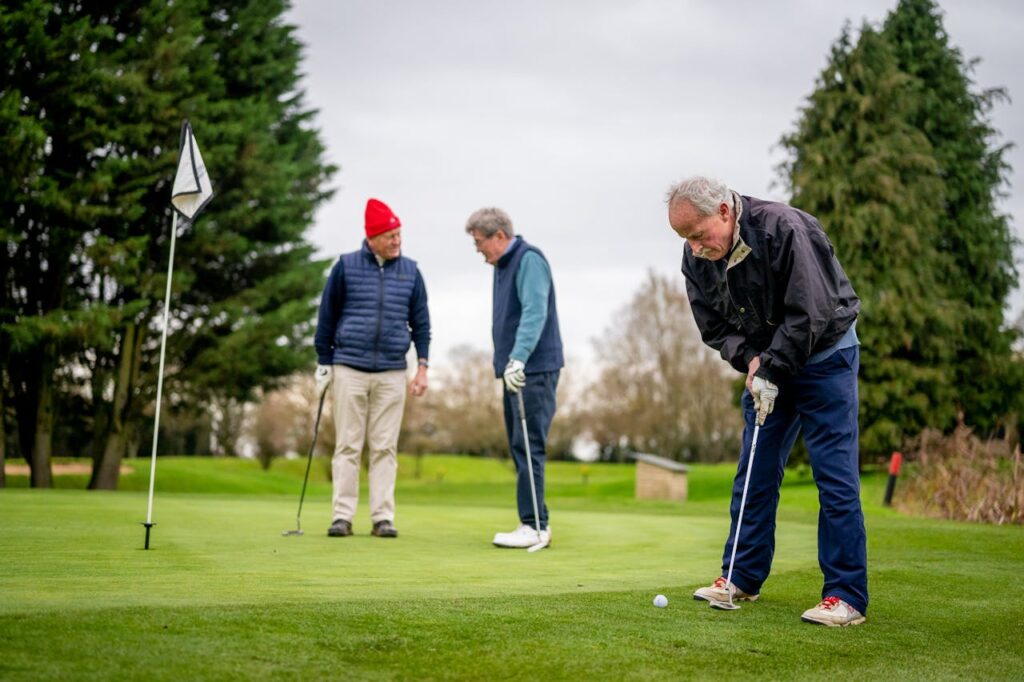
Pace of play is a huge deal in golf. If you’re slow, people notice. And they don’t like it. Luckily, you don’t need to rush—just be efficient.
Be Ready to Hit When It’s Your Turn
Golf is not a time to daydream. While others are hitting, use that time to get ready.
- Pick your club while walking to your ball.
- Take one or two practice swings—no more.
- Know where your ball is before it’s your turn.
The fastest players aren’t the ones who rush their swings. They’re the ones who prepare before it’s their turn.
Play “Ready Golf”
Ever stood in a group where everyone stares at each other, waiting for someone else to hit? Don’t do that.
- If you’re ready, hit—even if you’re not technically “away.”
- Don’t wait if someone’s further back but still looking for their ball.
- Move with purpose between shots.
Most amateur rounds are way too slow because people follow outdated rules about order of play. Unless you’re in a tournament, just hit when you’re ready.
Let Faster Groups Play Through
Sometimes you’ll be in a group that’s just slower. That’s fine. What’s not fine? Holding up an entire course behind you.
- If the group behind you is constantly waiting, let them go ahead at the next hole.
- It’s not embarrassing—it’s respectful.
- They’ll appreciate it, and you won’t feel rushed.
Limit Your Ball Search to 3 Minutes
You will lose balls. Everyone does. But don’t turn every lost ball into a full-scale search mission.
- If you can’t find it in 3 minutes, drop a new ball and take the penalty.
- If it’s not a competitive round, just take a drop without stressing about penalties.
- Don’t make others wait while you comb through the weeds like a detective.
Golf is more fun when everyone moves at a reasonable pace. Stay ready, keep things moving, and don’t let your group hold up the entire course.
4. Caring for the Course—Because No One Likes a Player Who Wrecks the Greens
A golf course isn’t just grass. It’s a shared space, maintained so every player gets a fair game. If you tear it up and leave it looking like a battlefield, other golfers—and the course staff—will hate you.
Good news? Keeping the course in great shape is easy. It just takes a little effort.
Fix Your Divots Like a Grown-Up
When you take a big swing, you’re probably going to rip up a chunk of turf (a divot). That’s normal. What’s not normal? Leaving it there like you’re above fixing it.
- If the divot is still in one piece, put it back and step on it.
- If it’s completely shredded, use the sand/seed mix provided by the course.
- If you don’t know how to fix it, ask—people will respect you for caring.
Fix Your Ball Marks on the Green
Ever walked onto a green and seen little craters everywhere? Those are ball marks, and they make putting miserable. If your ball lands hard on the green, it’ll leave one. Your job? Fix it.
- Use a ball mark repair tool or a tee.
- Gently lift the edges—don’t just stab at it.
- Tap it down with your putter to smooth it out.
If you see other marks? Fix a couple extra. The golf gods will repay you later.
Rake the Bunker Like You Weren’t Raised in a Barn
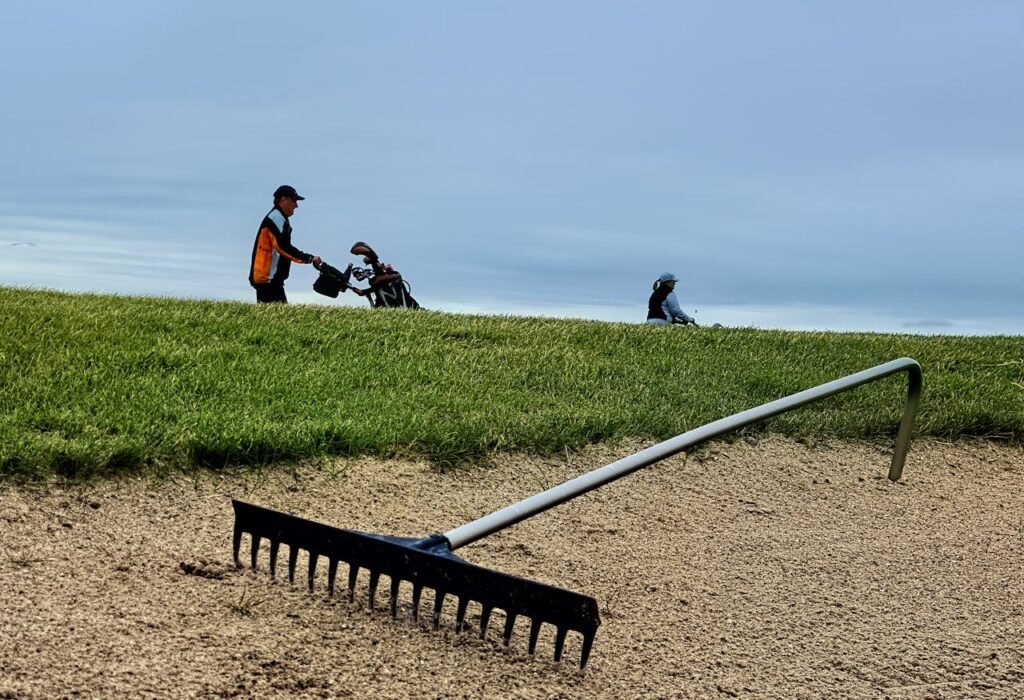
If you hit into a sand trap, fine. But leaving footprints and club marks behind? That’s not fine.
- Always rake the bunker after your shot.
- Enter from the low side so you don’t wreck the edges.
- Don’t leave the rake in the middle—put it where it won’t interfere with play.
A well-raked bunker makes life easier for the next player. And if you don’t care about that, at least know that people will judge you if you leave a mess.
Don’t Walk on Someone’s Putting Line
Putting lines are sacred. When a golfer reads a putt, they’re imagining the ball rolling along a perfect, smooth path. If you step on it? You ruin that.
- Watch where you walk on the green.
- Go around instead of stepping over someone’s line.
- If you’re unsure, ask—people appreciate the effort.
These suggestions on golf etiquette for beginners isn’t about being fancy. It’s about not being the person who makes the course worse for everyone else. Treat the greens, bunkers, and fairways with respect, and you’ll blend in like you’ve been playing for years.
5. Golf Cart Etiquette—Because You’re Not in a Race Car
Golf carts seem simple, right? You hop in, drive to your ball, and move on. Except… a lot of beginners treat them like bumper cars or off-road vehicles, and it’s a disaster waiting to happen.

Carts help keep the game moving, but they can also wreck the course if you don’t use them right. Here’s how to avoid looking like you just stole one.
Follow the Course Rules (Yes, They Exist)
Every course has its own cart rules. Some days it’s “90-degree rule,” some days it’s “cart path only.”
- 90-degree rule: Stay on the cart path until you’re level with your ball, then turn onto the fairway at a 90-degree angle.
- Cart path only: Stay on the path the whole round—yes, even if your ball is way over in the rough.
- If there’s no sign telling you otherwise, just follow what other players are doing.
Ignoring these rules damages the grass, slows the game, and makes you look like you have no clue what you’re doing.
Where to Park? Not Right Next to the Green
New golfers always park too close to the putting surface. Don’t. Ever.
- Stop at least 30 feet away from the green.
- Never drive between a bunker and the green—that’s sacred ground.
- If you’re sharing a cart, drop your partner at their ball first then drive to yours—this saves time.
Keep It Moving (But Not Like a Maniac)
Yes, pace of play matters, but that doesn’t mean flooring the gas and whipping around corners like you’re in a chase scene.
- Don’t slam on the brakes—the skids tear up the grass.
- Drive at a reasonable speed—no one’s timing you.
- No donuts, no sharp turns, no skidding—this isn’t a parking lot after it rains.
Don’t Be That Guy Who Leaves the Cart a Mile Away
Ever seen someone hit a shot and walk forever back to their cart? Don’t be that person.
- Always park your cart in the direction of the next hole.
- After putting, head to the cart before marking your score—do that while driving to the next tee.
- If you and your cart buddy hit to opposite sides of the hole, take a club and walk to your ball while they hit.
Carts make the game easier—but only if you don’t use them like an idiot. Follow the rules, park smart, and keep the course intact.
6. Additional Tips on Golf Etiquette For Beginners—The Little Things That Make a Big Difference
Golf has a ton of unspoken rules, and while no one expects beginners to know every single one, there are a few small things that will make you stand out—for the right reasons.
Show Up Early—Not Just On Time
Tee time at 10:00? That doesn’t mean you pull into the parking lot at 9:59.
- Get there at least 30 minutes early.
- Warm up at the range if possible—nobody wants to play with someone who’s stiff on the first hole.
- Check in with the starter so they know you’re ready to go.
Being late slows down everyone and makes a bad first impression.
Be Prepared—No One Wants to Lend You Gear
You don’t need to carry every club, but you do need to have the basics.
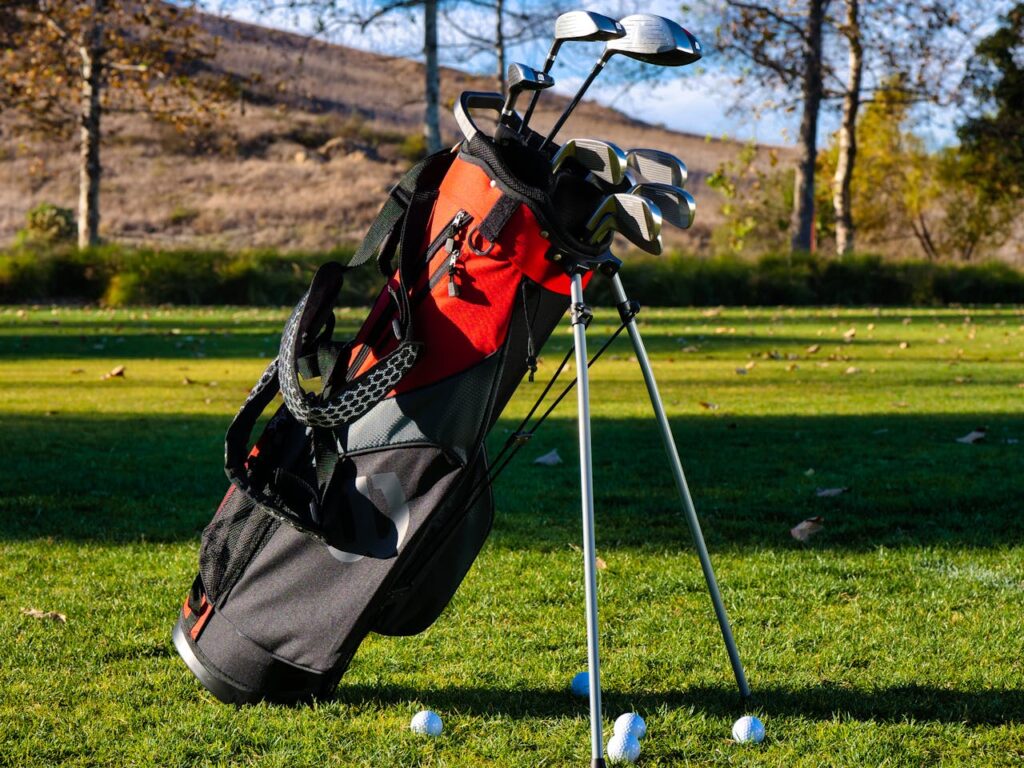
- Enough golf balls (you will lose some, guaranteed).
- A ball marker (a coin works if you don’t have one).
- A divot tool (if not, at least use a tee to fix ball marks).
- Tees—because asking for one on every hole gets old fast.
If you borrow something, give it back immediately. Sounds obvious, but you’d be shocked how many people “forget.”
Keep the Phone Use to a Minimum
Look, checking messages is fine. But constantly pulling out your phone? Annoying.
- Keep it on silent—not vibrate, silent.
- No calls on the course unless it’s an emergency.
- Taking a photo? Be quick and don’t hold up play.
Unless you’re filming a hole-in-one (good luck with that), leave the scrolling for later.
Walk at a Reasonable Speed
Golf isn’t a race, but no one likes a slow walker.
- Walk with purpose between shots—don’t drag your feet.
- Plan your next shot while you walk, not once you arrive.
- Keep up with the group in front of you.
People judge golfers on how they move. Slow, clueless walking? Not a good look.
Don’t Take Practice Swings on the Tee Box
You don’t need three full practice swings before every tee shot.
- Take one—maybe two.
- If you’re still unsure, just hit the ball.
- Save the practice swings for the driving range.
Extra swings don’t make you play better—they just slow everyone down.
Plan Ahead—Don’t Make the Group Wait
Before you hit, think about what you’re doing.
- Check wind, yardage, and hazards before it’s your turn.
- Know what club you need.
- If you’re walking, take a couple clubs so you don’t have to go back to your bag.
The goal? Make decisions quickly so the game keeps moving.
Golf is way more enjoyable when everyone knows what they’re doing—or at least acts like it. These little etiquette moves will make people respect you, even if your game isn’t great.
7. On the Green—Because Putting Is Hard Enough Without Distractions
The green is where everything matters. A great putt can save a terrible hole, and a bad putt can make a great hole feel like a disaster. But the real challenge? Dealing with people who don’t know basic green etiquette.
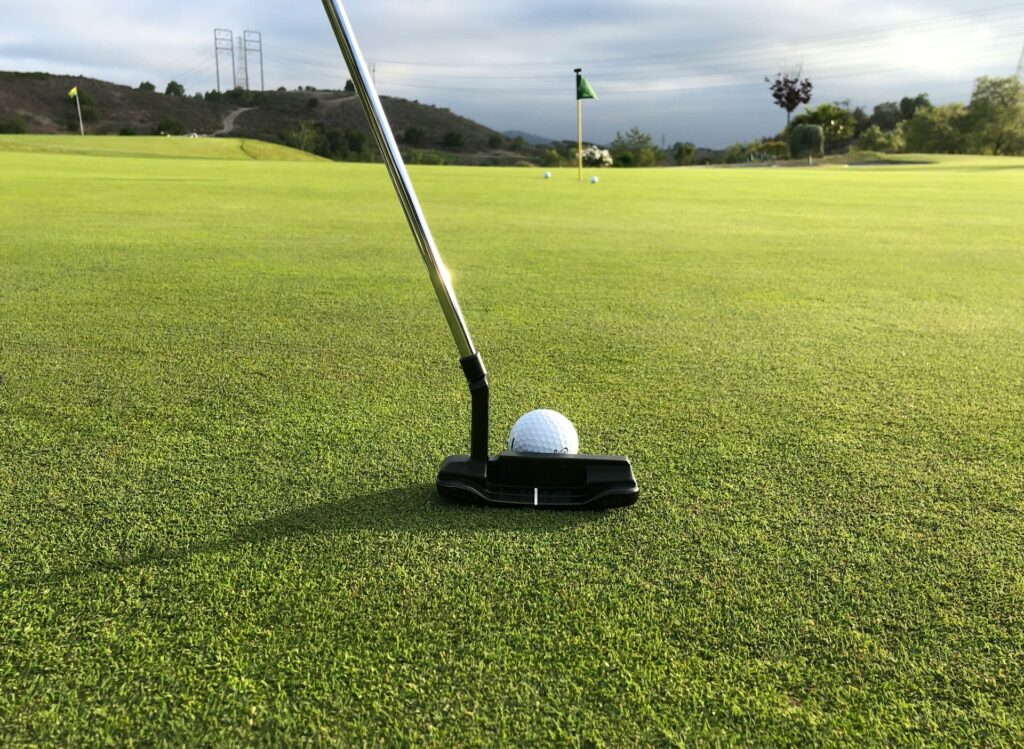
Don’t Walk on Someone’s Putting Line
Imagine you’re lining up the perfect putt. You read the break, you set up your stroke… and someone just walked right over your line.
- A putting line is the imaginary path a ball will take to the hole.
- If you step on it, you can mess up the surface, which can throw off a putt.
- Go around—it’s not that hard.
Mark Your Ball—Don’t Leave It in the Way
If your ball is between someone else’s ball and the hole, mark it.
- Use a coin or ball marker, not a tee (that’s weird).
- Place it directly behind your ball, then pick your ball up.
- When it’s your turn, put the ball back exactly where it was.
Leaving your ball in someone’s way is just lazy.
Replace the Flagstick the Right Way
Some beginners have no idea what to do with the flagstick. Here’s the deal:
- The first person to finish the hole should replace the flag.
- If you’re the closest to the hole when everyone is done, put it back in.
- Don’t drop it carelessly—lay it down gently so it doesn’t damage the green.
If someone prefers to putt with the flagstick in? Leave it alone.
No Standing in the Peripheral Vision Zone
Putting takes concentration. You don’t want distractions, and neither does anyone else.
- Don’t stand directly behind someone’s putt.
- Don’t stand behind the hole like a weirdo.
- Don’t hover in their peripheral vision.
Give people space. It’s not that complicated.
Be Ready to Putt—No One Likes a Slow Green
Greens are not a time to stand there staring at your putt for five minutes.
- Read your putt before it’s your turn.
- Take a couple practice strokes, then go.
- If it’s a short putt? Just tap it in—don’t mark it and reset.
Fast greens make everyone happier.
8. Sportsmanship—Because No One Likes a Sore Loser (or an Annoying Winner)
Golf is a competitive game, sure. But it’s also about respect. You don’t need to be the best player on the course—you just need to act like someone people want to play with.
Control Your Temper—No One Cares If You’re Mad
Everyone hits bad shots. Everyone. What separates a good playing partner from an embarrassing one? How they handle it.
- No club throwing. You’re not a toddler.
- No swearing tantrums. A grumble? Fine. A full meltdown? Not fine.
- Don’t slam your putter after a missed putt. You’ll need it for the next hole.
Golf is frustrating sometimes. But if you act like a hothead, people will avoid playing with you.
Don’t Offer Unsolicited Advice
Nobody likes the guy who acts like a YouTube golf coach. Unless someone specifically asks for help, keep your tips to yourself.
- Saying “You lifted your head” after every shot is annoying.
- “Try this grip” might sound helpful, but it’s usually not.
- Worry about your own game—you’ve got enough to deal with.
Be Gracious, Whether You Win or Lose
Maybe you just shot the round of your life. Maybe you played terribly. Either way:
- If you win, don’t rub it in. A simple “Good match” is enough.
- If you lose, don’t make excuses. Blaming the wind, the greens, or bad luck just sounds weak.
- Shake hands, thank your group, and move on.
People remember how you act more than how you play. Be the golfer people actually want to play with.
Frequently Asked Questions (FAQs) About Golf Etiquette for Beginners
1. What is the most important rule of golf etiquette?
There isn’t just one, but if you had to pick, pace of play is a big deal. Slow players frustrate everyone. Be ready when it’s your turn, don’t take forever over each shot, and keep up with the group in front of you.
2. Can I talk while someone is hitting?
Short answer: No. Golf is a quiet game when someone is hitting. Talking, whispering, or even moving too much can distract players. Save the conversation for when you’re walking between shots.
3. What do I do if I accidentally hit my ball toward someone?
Yell “Fore!” as loudly as possible. Don’t hesitate. The second you think your ball might hit someone, shout it out to give them time to react.
4. Is it okay to use my phone on the golf course?
Yes, but keep it on silent and don’t hold up play by texting or taking calls. If you want to take pictures or check a golf app, be quick about it.
5. How do I let a faster group play through?
If a group behind you is waiting on every hole, it’s polite to let them go ahead. At the next tee box, wave them through, then step aside while they play past you. It keeps the game moving and avoids frustration.
6. Why can’t I walk on someone’s putting line?
Stepping on a putting line can change how the ball rolls, messing up a player’s shot. Always walk around their line to avoid affecting their putt.
7. What do I do if I lose a ball?
You have 3 minutes to look for it. If you can’t find it, take a drop and move on. Don’t spend forever searching while holding up the group behind you.
8. Do I have to rake the bunker after hitting out of it?
Yes. Always rake the bunker so it’s smooth for the next player. Don’t leave footprints, club marks, or a giant mess.
9. Can I take multiple practice swings?
Keep it to one or two. Taking five practice swings before every shot slows the game down and doesn’t actually help you play better.
10. Should I fix divots and ball marks even if I didn’t make them?
Yes. If you see a ball mark or divot, fix it—even if it’s not yours. It keeps the course in good shape and shows respect for other players.
Final Thoughts
Golf etiquette isn’t about fancy rules or being a golf snob. It’s about respecting the game, the course, and other players.
- Keep the game moving.
- Fix your messes.
- Stay out of people’s way.
- Control your temper.
- Act like someone people want to play with.
Follow these simple, free etiquette tips, and you’ll look like you’ve been golfing for years—even if your swing still needs work.

